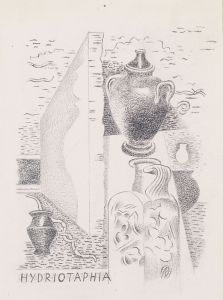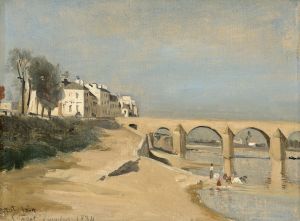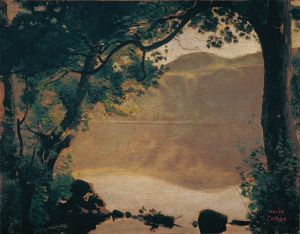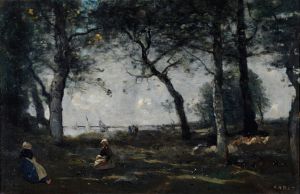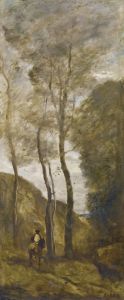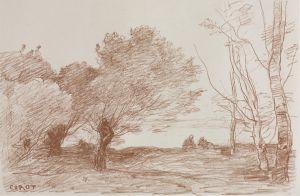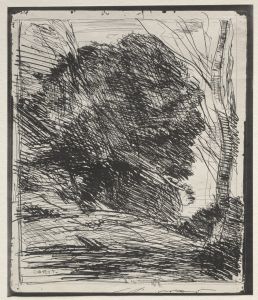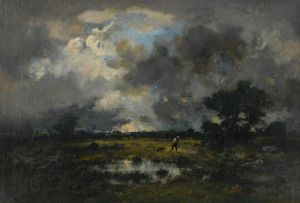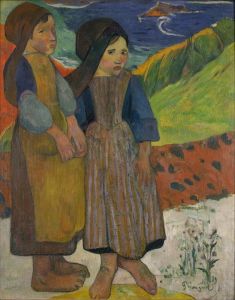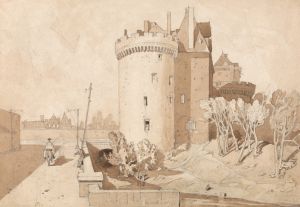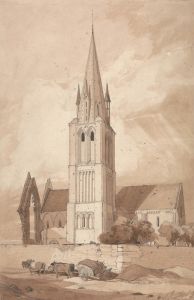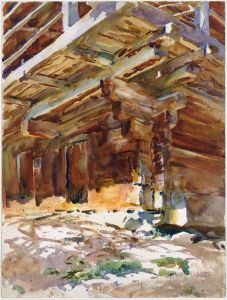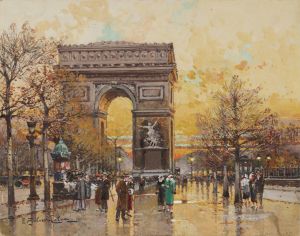
The Plain of La Beauce
A hand-painted replica of Jean-Baptiste-Camille Corot’s masterpiece The Plain of La Beauce, meticulously crafted by professional artists to capture the true essence of the original. Each piece is created with museum-quality canvas and rare mineral pigments, carefully painted by experienced artists with delicate brushstrokes and rich, layered colors to perfectly recreate the texture of the original artwork. Unlike machine-printed reproductions, this hand-painted version brings the painting to life, infused with the artist’s emotions and skill in every stroke. Whether for personal collection or home decoration, it instantly elevates the artistic atmosphere of any space.
Jean-Baptiste-Camille Corot, a prominent French landscape painter, created "The Plain of La Beauce" in the mid-19th century. Corot, born in Paris in 1796, is often associated with the Barbizon School, a movement that emphasized naturalistic landscape painting. His works are known for their poetic and atmospheric qualities, often capturing the serene beauty of the French countryside.
"The Plain of La Beauce" is a quintessential example of Corot's mature style, which blends realism with a lyrical, almost dreamlike quality. La Beauce is a region in north-central France, known for its vast, flat agricultural plains. This area, often referred to as the "granary of France," provided a rich source of inspiration for Corot, who was deeply influenced by the natural landscapes he encountered.
In this painting, Corot masterfully depicts the expansive plains of La Beauce, using a muted color palette that conveys the tranquility and vastness of the region. The composition is characterized by its horizontal lines, which emphasize the flatness of the landscape. Corot's use of light and shadow creates a sense of depth and atmosphere, drawing the viewer into the scene.
The foreground of the painting typically features elements such as fields, trees, and perhaps a path or road, leading the eye towards the horizon. The middle ground and background often include distant farmhouses or small villages, which are rendered with a delicate touch, blending seamlessly into the surrounding landscape. The sky, a significant element in Corot's work, is usually depicted with soft, diffused light, adding to the overall sense of calm and serenity.
Corot's technique in "The Plain of La Beauce" reflects his ability to capture the essence of a place with simplicity and elegance. He often worked en plein air, or outdoors, which allowed him to observe and render the natural world with great accuracy and sensitivity. This approach was somewhat revolutionary at the time and influenced many later artists, including the Impressionists.
The painting is also notable for its lack of human figures, which is a common feature in many of Corot's landscapes. This absence allows the viewer to focus entirely on the natural elements and the mood they evoke. The simplicity and purity of the scene reflect Corot's belief in the beauty of nature and his desire to convey its peaceful and restorative qualities.
"The Plain of La Beauce" is housed in various collections, including major museums and private collections. It remains a significant work in Corot's oeuvre, exemplifying his skill as a landscape painter and his contribution to the development of modern landscape painting.
Jean-Baptiste-Camille Corot's legacy as a master of landscape painting is firmly established, and "The Plain of La Beauce" continues to be celebrated for its beauty, technical mastery, and the quiet, contemplative mood it evokes.





